#Environmental Genetics
Text
The Environment's Role in Spiritual Growth
Spiritual growth is an inward journey that involves deepening self-awareness, a connection to a higher purpose, and a pursuit of inner peace and enlightenment. Though one might perceive spiritual growth as purely internal, the environment plays an instrumental role in shaping this voyage.**The Outer Reflects the Inner**: Spirituality isn’t limited to the realm of meditation, prayers, or religious…

View On WordPress
#Agency#Cultural Norms#Emotional Climate#Enlightenment#Environment#Environmental Genetics#genetic predisposition#Human Development#Inner Peace#Introspection#Life Trajectory#Nature#Peer Influence#Personal Sanctuary#Self-Awareness#Socialization#Spiritual Community#Spiritual Growth#Spiritual Journey#Transformation
11 notes
·
View notes
Text
#vegan leather#plastic pollution#plastics#pleather#leather alternatives#leather#environmentalism#good news#science#environment#bacteria#microbiology#genetic engineering
152 notes
·
View notes
Text
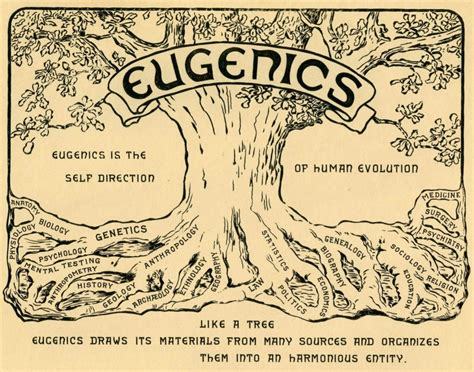
Queer Ecologies: Sex, Nature, Politics, Desire
Chapter 2 : Enemy of the Species by Ladelle McWhorter (part 3)
Species Troubled Past
1830s, USA—the abolitionists movement was growing. “it was simply wrong to enslave fellow human beings, no matter what benefits to society might result and no matter what racial differences might exist in intelligence, strength, health or ability” and old justifications for slavery no longer carried weight so slavery defenders turned to science—“Negroes and Caucasians were in fact distinct species” (79)
‘Important’ Names:
John Bachman- naturalist, South Carolina
Josiah Nott- physician, Alabama, “the most vocal of slavery’s scientific proponents”
Samuel G. Morton- world-renowned anatomist and professor medicine, Philadelphia
James Cowles Prichard- biologist, England
Nott used Prichard’s definition of species, “separate origin and distinctness of races, evinced by a constant transmission of some character peculiarity of organization” and referenced Morton’s study that found “significant racial differences in cranial capacity” to claim that Caucasians, Negroes, American Indians were separate species (79)=polygeny
Monogeny =the theory that humanity is one unitary species; Bachman offered this definition of species: “those individuals resembling each other in dentition and general structure. In wild animals […] they must approach the same size; but in both wild and domesticated animals they must have the same duration of life, the same period of utro-gestation, the same average number of progeny, the same habits and instincts, in a word, they belong to one stock that produce fertile offspring by association” (2005, 220) (80)
Racial diversity already existed in the USA, so Nott argued that ‘Mulattoes’ (crosses between Negroes and Caucasians) were sterile hybrids like mules and thus met Buffon’s requirement and qualified as two distinct species (80)-- he used his ‘observations’ as a physician who had treated many enslaved people to support this.
“Between 1846 and 1850 most respected scientists in the United States converted to polygeny”. Types of Mankind (1854)-published by what is now known as the American School of Anthropology.
Returning to Foucault’s words the author states, “concepts […] are for cutting. They are never merely benign representations of a natural arrangement.” (81) “Species could be made to function oppressively to separate white from blacks because […] it was already a tool for marking separations in natures heterogenous continuities in the interest of prevailing human practices” (81).
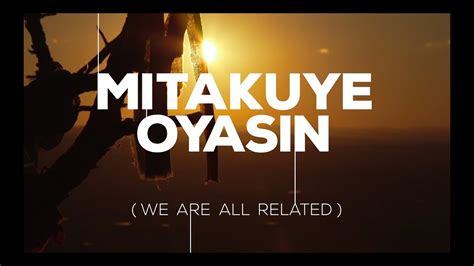
The Origin of Species (1859) Charles Darwin, who like many others maintained that the concept of species was practically meaningless, given the inevitability of evolution. “There are not eternally fixed types, nor are there eternally distinct lines of descent. All life on earth, no matter how morphologically or functionally distinct at present, conceivably could be traced back to a single germ line” (81) To me this concept is also what Mitakuye Oyasin means—we are all related. I believe my ancestors knew this ‘scientific’ truth long before Charles Darwin was alive. Charles Darwin never answered the question on the origin of species—species must change over time but not when change amount to a new species (82).
The theory of natural selection was remarkable, proponents agreed but it was incomplete—clearly certain groups like Africans, Pacific Islanders, and indigenous people from North and South America had not evolved sufficiently to produce ‘civilization’ (82) (Between indigenous peoples and those who supposedly created ‘civilization’, only one group has nearly destroyed their very environment at almost every turn—making them remarkably unfit and poorly adapted to the planet--and it isn’t indigenous peoples). But even those in the ‘higher races’ could fail to adapt—criminals, idiots, the mad, the degenerate, the chronically ill…like the ‘lower races’ these weaklings should be eliminated by natural selection. BUT, the Caucasian elite grew increasingly anxious…was humanity still evolving? Or was civilization circumventing the evolutionary process? Could it even reverse itself?—devolution. Modern technology and medicine= saving more people who might have once not survived, “allowing those with inferior traits to mature and reproduce” (82).
Madison Grant, was one of the many theorists who was concerned about devolution. He was a New York attorney and a conservationist who co-founded the Save-the-Redwoods League and the Bronx Zoo and helped establish Glacier and Denali National Parks. (83) Grant believed humans had evolved under harsh environmental conditions. Anglo Saxon history and the rising tide of inferiority that was everyone else…”Mistaken regard for what are believed to be divine laws and a sentimental belief in the sanctity of human life, tend to prevent both the elimination of defect in infants and the sterilization of such adults as are themselves of no value to the community. The laws of nature require the obliteration of the unfit” (Grant 1916,44-45) (83). (When in fact it is humans caring for one another that built humanity and underlies the entire point and purpose of civilization). Grant advocated for the sterilization of the criminal, diseased, insane and other weaklings and those he termed ‘worthless race types’ like Jews, blacks and indigenous peoples.
Immigration, they believed, should also be curtailed to prevent undesirables from entering the USA. “Immigration is thus, from the racial standpoint a form of procreation and like the more immediate form of procreation it may be either the greatest blessing or the greatest curse” (Stoddard 1925, 252) (84).
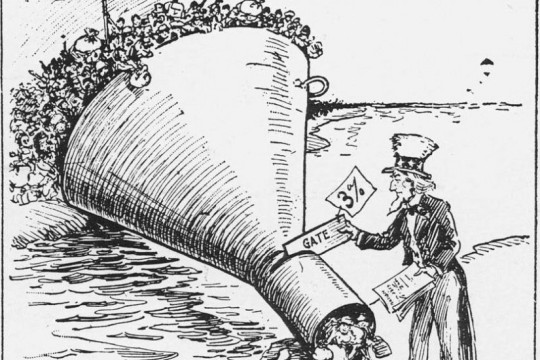
So elite influential men and their allies created organizations such as the Immigration Restriction League (full of Harvard alumni), the American Breeders’ Association (later renamed the American Genetics Association), and what later became the American Psychiatric Association-- and they won passage of an immigration restriction bill (1917)—it instituted literacy tests, put caps on the number of immigrants, national quotas and denial of entry basis on the condition called ‘constitutional psychopathy’. This effectively screened out anyone who did not conform to gender norms or anyone who admitted to homosexual desire. “Further, any immigrant who, during the first give years of residence in the United States, committed a crime or showed signs of any allegedly hereditary physical or mental defect, including sexual inversion, could be deported” (84). Congress also barred people who were ‘feebleminded, morally degenerate, or sexually suspect’.
Then in 1924, they reduced the number of people who could immigrate to the US by an annual total of 150,000, making it the exclusive country in the world. These provisions stayed in effect well past the middle of the twentieth century (85).
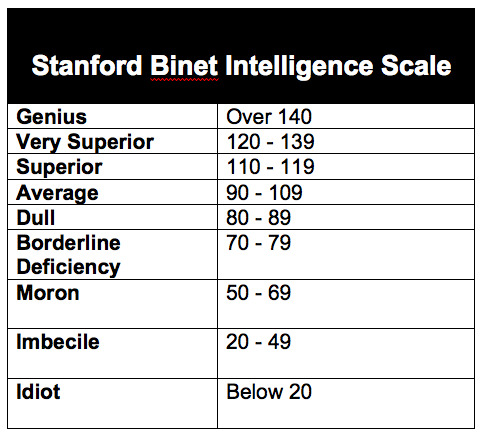
The introduction of the Simon-Binet IQ test in 1912 made identifying those were ‘intellectually unfit’ quick and easy (85)—public schools became screening grounds. Certain children would be segregated from their classmates until they could be institutionalized. The test was modified by eugenicist psychologist Henry Goddard to include a grade of ‘feeblemindedness beyond the imbecile. Individuals with a test measured mental age of eight to twelve years were classified as morons.’ (85) “Women who had children out of wedlock were automatically classified as such but any deviation from heterosexuality and prescribed gender roles could earn a person the label of moral imbecile in addition to the label of degenerate, lunatic or psychopath” (85-86). Hundreds of thousands were locked up for life as a result of these efforts to forestall a perceived threat to natural selection and evolution of humanity.
Quietly, eugenicist physicians had been sterilizing ‘defectives’ in prison, hospitals and asylums since the 1880s. In 1927, the Supreme Court endorsed these eugenic practices in Buck v Bell (86). By 1927, the number of Americans legally sterilized without their consent would reach 65,000~ (86).
“Adolf Hitler learned a great deal from American eugenicists, particularly about involuntary sterilization” –1934 Nazi involuntary sterilization law was based on the Model of Eugenical Sterilization Law drafted by American biologist Harry Laughlin (1922). He advocated for the sterilization of about 10% of the U.S population, those deemed ‘socially inadequate’ such as the (1) feeble-minded; (2) Insane, (including the Psychopathic); (3) Criminalistic (including the delinquent and wayward);(4) Epileptic; (5) Inebriate (including drug habites); (6) Diseased (including the tuberculosis, the syphilitic, the leprous, and others with chronic infections and legally segregable diseases); (7) Blind (including those with seriously impaired vision); (8) Deaf (including those with seriously impaired hearing); (9) Deformed (including the crippled); and (10) Dependent (including orphans, ne-er-do-wells, the homeless, tramps and paupers) (Laughlin) (86-87).
By 1934, nearly thirty US states had enacted such laws, though few were as drastic as Lauglin’s suggestion. Some provinces in Canada and in Europe also followed. “The Nazis […] has some serious eugenic catching up to do” (87).
By 1937, the Nazis had sterilized approx. 250,000 Germans before they began to eliminate defectives through eugenic ‘euthanasia’ (87)—genocide.

Though such things were never enacted in the US, proponents of eugenics considered it and continued to push their sterilization agenda (Partlow and his three-man committee designed to sterilize any sexual perverts, Sadists, homosexualists, Masochist, Sodomists or two-time convicted rapists. They would have no right to judicial review. The bill passed state legislature when it was vetoed twice by Governor Bibb Graves) (88).
As the details of the Nazi regime became more widely understood in the US, the eugenics movement lowered its profile and changed tactics. “Eugenics should therefor operate on a basis of individual selection” and “Eugenics, in asserting the uniqueness of the individual, supplements the American ideal of respect for the individual” (89)
#queer ecologies: sex nature politics desire#eugenics#genetics#critical ecology#queer ecology#ecofeminism#queer theory#environmental politics#colonialism#racism#ableism#erotophobia#heteronormativity#queer history#nazis#ww2#immigration#immigrants#ecology#long post
24 notes
·
View notes
Text
I LOVE BIOLOGY!!!!!
#🔪 - mello talks too much#(basic biology btw)#SO MUC#omhg its so fun i love it so much#micro biology and small stuff not ecology and environmental stuff that shit is lame#BUT I AM SO EXICTED FOR THIS SEMESTER!!!!!!!!!!!#I LOVE GENETICS AND MITOSIS AND THE POLYPEPTIDE MEMBRANE#i hate the citric acid cycle.#I LOVE TRANSCRIPTION AND TRANSLATION AND GENETIC MUTATIONS#I LOVE ENZYMES AND THE LOCK AND KEY MODEL AND ACTIVE SITES AND ALLOSTERIC SITES#guys i am not kidding i am giggling and blushing rn i love it so much omg#(once i get to hard biology i will want to die)
24 notes
·
View notes
Text
Konoha: Wow, it’s so great our double agent within the Uchiha Clan has the selfless Will of Fire, completely cancelling out the possibility for trauma, repressed emotion and deep love to trigger the Curse of Hatred and cause them to sacrifice the many for the few they care about. We can relax and leave it all to him :)
Itachi, trapped on a burning clifftop, wrapping Sasuke in duct tape in preparation to throw him over the edge: ~ I will kill our friends and family to remind ☽ you ☺ of ♬ my ☮ love ☠ ~
#itachi uchiha#naruto meta#i'm not 100% if in either itachi shinden or the manga/anime itachi ever actually talks of the will of fire himself#and technically its a philosophy vs the curse of hatred being part philosophy part kinda genetic environmental mix#but boy oh boy does the general uchiha clan's self interest of not being spied on scapegoats pale against itachi's m.o#its not even exclusively a sasuke thing he drowns a young shinobi who tried to kill kisame for 2 days in tsukuyomi#even though he planned to stab him straight after#and he tortures shisui's killer and everyone who accused him of killing him himself#and basically locks izumi in a snowglobe with just illusionary people and him for 70 years#like will of fire or no it feels like his mindset is right up there with madara-obito-sasuke#its just that part of his single minded love happens to be konoha-directed#like he doesn't have asura's philosophy he has indra's#itachi's goal is peace but his tool is almost exclusively power and fear#with love being something he keeps very private#the ninja world will play nice if he has to hold it at knife-point#not anti itachi he is a mess it's great#he's so bad at being good but could have become so so much worse#like danzou is pretty heavily implied to have chosen itachi to kill his clan the day he graduated so his whole life in konoha\#is just slowly being steered to a slaughter
56 notes
·
View notes
Note
According to the responses to the 2021 American Community Survey available on the US Census Bureau website, approximately 13% of Americans self reported some form of disability. Initially, I thought that this was a high value simply because there's so little perception of it in media, unless that media is specifically designed to show people with disabilities. But then I looked a bit deeper into it. Nearly 50%(it was like 48 point something) of those who reported a disability reported an ambulatory disability. Given this figure, I wonder if the percentage is underreported. A lot of mental health and disability has only been accepted in mainstream media in recent years. There are also questions I have like:Do correctible vision deficiencies count as disabilities? I would argue yes. I wear glasses. It's not something I think about a lot, but without my glasses, I would be hard-pressed to function normally within society. They are an accommodation. Yet in a group of 25-30 people(the class i was in when i was thinking about it), I easily counted at least 5 who wore glasses. Obviously, that's not a large enough sample size to make any kind of assumption off of, but I think I could probably find similar numbers if i looked in other places. Part of me doubts that I was marked as having a vision difficulty despite having and wearing glasses. And it's made me think and wonder if 13% wasn't that large of a number after all. I mean, it's a massive population. It's 42 million people, but I wonder if the number is even larger than that. What do you think?
So, I think it's complex. I'm not saying you are wrong in your investigation, but due to the personal nature of disability, it makes me wonder, too. I think the answer will be just as complex, is what I am saying.
Simultaneously, disability is very common, but the idea of being "unable" to live or be productive makes it so that disability becomes a taboo. It leads you to believe that disability is uncommon, or only exists in the "extremes". I do think that contributes to the perception people have of their disabilities, especially in being in denial about their disabilities disabling them.
I think you can generally say that certain things, like eye vision, can be disabilities, as long as we also recognize that it exists on a spectrum. I also have eye glasses, but if you ask me what I'm disabled by, I probably wouldn't bring that up unless it is relevant, in the narrow ways it is for me personally. I think that's part of why the ambulatory statistic is high. There are many situations where your disability doesn't really... disable you, but you're still disabled because there are aspects of your life you either cannot do, or you need help in order to do.
Thirteen percent is a large number, but when you consider the vast array of disabilities, the number of veterans and elderly, and (like you said) the number of people likely either in denial about their disability or the people for whom education doesn't include disability, the number could very well be thirteen or higher.
It's interesting that ableism is so ubiquitous, yet so many of us are disabled (with or without our knowledge).
#ask#disability#disability advocacy#i think a lot of people are caught up in the this is a disability/this isn't a disability binary that we fail to see the complexities...#...anything can disable you given the 'right' circumstances...#...the fact that my right leg is up to half an inch shorter than my other leg is what causes my pain...#...but my vision is less of a disability for me personally. my prescription most likely needs to be stronger but i know i can manage...#...so if you have me pick which disables me more i would pick my fuck up of a skeleton....#...but that could very well change! disability is NOT stagnant...#...and we need to let disability be complex...#...so i think the percentage will never truly be accurate because its so complex and we can't ask every single person for their entire story#anything can become a disability if the right circumstances in an individual's life present itself#and these circumstances can be genetic/environmental/financial/socioeconomical WHATEVER it may be#i hope this answers the question well... i can clarify further if need be
30 notes
·
View notes
Text
Pseudomonas aeruginosa
Polyethylene plastic, found in products such as plastic bags, water bottles, and food packaging, takes 1,000 years to dissolve naturally.
The RPI team tackled the challenge of engineering this bacteria to convert the carbon atoms of polyethylene into a genetically encoded silk protein.
Polyethylene is particularly problematic, as it is commonly found in single-use applications. Resultingly, polyethylene is the most commonly produced plastic, representing 30% of all plastics production
Mechanical recycling is inefficient, typically yielding materials that have inferior mechanical properties compared to virgin plastics.
The development of a new strain of Pseudomonas bacteria capable of converting depolymerized polyethylene into high value bespoke recombinant protein products.
3 notes
·
View notes
Text
Bro. Does anyone else feel hopeless
#like.#Palestine#capitalism#system racism#its all eating me alive. im doing what i can but. its not enough im just one man.#all i can do is be kind and help the people i can.#i know its enough for one person to do. to make a man a sandwich or give a friend a ride.#to give the person at the window a tip and hold the door open for others.#but its like. im so hopeless its not enough. the world is getting worse akd worse.#i feel like im living in one of those dystopian movie opening montages#war genocide famine natural disaster disease global warming#its KILLING me.#and on top of all that i have genetic depression its not just environmental#and im like. just shut up and be happy#but i cant be and im alone and just. depressed#idk.#jay rants#jay rambles#jay jabbers#i know this isnt just me feeling this way but i still feel isolated nd i blame capitalism & our government and i think we should [redacted]
7 notes
·
View notes
Text
creator bless my chordates prof for giving me not one but two extensions - the second one to the very last day for submitting final grades - but god if i don't want to fucking kms over writing this review paper djkfshjf
it's not even hard! it's 1,000 words!!! i'm only synthesizing papers that have already been written about experiments already performed. i did a bunch of journaling to process what the fuck my problem is/what's blocking me and worked through some feelings... i even cried a little bit. And Yet!!!!!!!!! i spent 8 hrs today staring blankly at my laptop screen unable to formulate words to describe life history plasticity in rainbow/steelhead trout. i feel like i'm trapped in purgatory.
#they're fish and um. they do fish things. sometimes they fuck off (migratory steelhead) and sometimes they don't (resident rainbow)#sometimes its a genetics thing and sometimes its environmental flux. ok thats all i got.#going to bang my head on a wall until the words leak out
2 notes
·
View notes
Note
What would you say your farm goals are rn? And do you still have eventual dog breeding goals?
Rn, getting the downsized herd settled and figuring out splitting the daily workload with my mom and such. We have no breeding plans this season, will probably look into a fainter cross buck next season for hardiness but I doubt I'll keep back many kids. There's a couple we are raising up rn from last season that i might sell to a friend who wants to start her own hobby herd this year.
My long term goals are still hearty and hardy animals who don't need too much medical intervention too often and who can kid easily, have good mothering skills, etc. Next generation I want better parasite resistance. But right now we are just figuring out how daily upkeep husbandry and maintenance is going to work going forward!
For dogs I don't have immediate plans bc all my dogs are spayed. I still co-own Mari, Dandelion, Pixie and Bao, so if any of them are bred I will have some input there. And if Mari is bred I will hopefully be able to spend some time with and help out with puppy raising!!! But, for now, no immediate plans myself :) getting things settled around the house and yard and in my own life/with my health before I think about dipping my toes back into dog breeding as a concept.
I am PROBABLY getting a goldador service prospect next year or the year after, out of a Lab I really like who is a working SD and a sweet golden who his handler thinks is a good match. And if that dog turns out nicely and passes health checks I might breed it. But that's so far in the future it doesn't make sense to make any actual plans around!
#a couple does may kid this winter and we will milk those for sure#i think Poe and Bae may be bred. but Hawthorne and Lovelace are getting a break this season#getting to re-know everyone now that we have less stock and can consolidate them in one big pasture.#a couple sheep are still here because mom essentially wants them as pets#and didnt want them to get sold for meat#so we are also working out a shearing schedule and such but not gojng to breed sheep anymore for now#if i get a better handle on my illness in the years to come i might try again#but rn? cant keep up with husbandry if we have that many. esp with shearing.#its so important to prioritize that imo SO YEAH#also mom and I are thinking about rearranging/overseeding some pastures#anyway!#the lab i want a pup from is Ace who some of you may remember sired the chinook outcross litter#his puppies have all matured really nicely and are similarly bombproof#so im optimistic a pup out of him would have that environmental stability that noodle struggles with :)#pixie is the only dog i co own who is an adult and her testing is almost finished so if she is bred next year Ill let yall know 😊#she just needs eye exam and some -- god what else... shes got basic genetic and hips and elbows done. i think she needs#a couple more collie specific genetic tests for stuff embark doesnt do
60 notes
·
View notes
Text
Coffee fan? Always looking for the best brew? Here's why different beans taste the way they do.
#science#science communication#scicomm#stem#science education#science blog#biology#environmental science#genetics#Botany#coffee#coffee beans
2 notes
·
View notes
Text

Queer Ecologies: Sex, Nature, Politics, Desire
Chapter 2 : Enemy of the Species by Ladelle McWhorter (final)
The Species and Modern Genetics
The science of genetics made the basis for eugenics and much of both are still felt today. “Geneticists of the highest rank did not reject eugenics during or after World War II. Purged of its animosity towards various racial groups, eugenics was not only accepted but championed. Meanwhile, immigration quotas and restrictions remained in place. Classification of people as defective on the basis of IQ tests, diagnoses such as sexual psychopathy and transgender behavior continued and resulted in institutionalization of thousands of people, may of whom were subjected to treatments such as aversion therapy, lobotomy, clitoridectomy, and physical or chemical castration” (90). This continued well past the end of WW2 for at least another quarter-century.
What is species in modern genetic discourse?
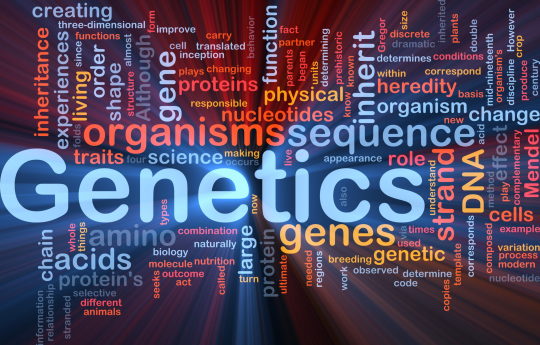
At present, there is no generally agreed upon scientific definition of ‘species’. “Hence any attempt to argue either that queer people are enemies of the human species or that we are important contributors to it must falter for lack of a clear referent for one of its key terms” (91).
“By Making reproductive isolation an essential feature of speciation, adherents of the biological species concept import a kind of teleology into the theory of natural selection. Nature WANTS diversity of species” and “Speciation is life’s way of colonizing new environments in a drive to conquer the planet” (93).
The reality is that “life has no aims” and “does not select for diversity per se; it selects for fecundity, the opposite of sterility; diversity (the isolation of distinct gene pools) occurs as a side effect” (93)

The Recognition Concept by Hugh E. H. Patterson, “a species is ‘that most inclusive population of individual biparental organisms which share a common fertilization system” (Patterson 1992, 149) This creates the ‘gene pool’; a positive phenomenon not a negative—enable reproduction. A system of signals in which organisms identify a ‘appropriate mating partner’—chemical, aural, behavioral. Able to recognize and respond to potential mates (SMRS, specific mate recognition system)
This is still highly heteronormative; “through natural selection, deviantly gendered or sexed organisms must die off, rendering gendered heterosexuality a stable feature of normal members of any species. This is the essential truth about species and the natural way of things” (95).
Queer Political Opinions
There is real danger in using the ‘species’ concept when trying to argue for diversity; the “scientific principle at issue may carry with it a whole history of connections and meanings that may not serve queer interests and purposes in the long run”. Moreover, the author argues that “science has not demonstrated that it merits the authority given to it to decide social, political, and moral questions. At its best science is an important tool and component in the process of making such decisions, not a final arbiter.” And we may do better to “question the authority” and validity “ of the science used against us” rather than embrace scientific concepts uncritically (96)

“If sexual and gender diversity are valuable in human society, they are so regardless of their value for species preservation or evolution” (96).
We must ask “opponents of our inclusion in social institutions and civil society to explain why they believe uniformity of sexuality and gender are valuable or why diversity of sexuality and gender are bad. And when they base their arguments on evolution and preservation of the species, we can be ready to counter them—because they clearly do not know what they are talking about” (96).
#queer ecologies: sex nature politics desire#queer ecology#ecofeminism#heteronormativity#queer theory#critical ecology#environmental politics#queer history#erotophobia#colonialism#ecology#biodiversity#biology#racism#eugenics#genetics#species#homophobia#queerphobia#transphobia#history#american history
5 notes
·
View notes
Text
switch to history major yes/no
#cons: spent money on bio stuff already so thats a waste -_- uhm sunk cost fallacy. uhm idk ill teach hs history or work in#an office i just cannot do stem im sorry i was made to write non-research essays and present stuff. sigh#evil stem students etc like. whatever im stressed its week four. i should kms#just like. i love bio but only the bio classws not like physics and chem and calc etc. i have to take ochem in a year or so. idk what#dipoles are or how to read a lewis chart#so like im passionate abt the subject but only the surface level stuff yknow now mechanisms beyond that. genetics was hell evil course#and i dont want an environmental science degree cause then youre locked into mostly consulting or gis stuff which#no way. augh let me teach hs historyand then get a phd in some hyper specifically field and then get some tenor job in fourty years idk#like i do think history is an easy subject literature too. to me like the same way i never needed to study ecology cause#you dont actually learn anything yiu just know facts and concepts not like equations. like fake learning.#augh whateverrr i will simply rot i dont think id be able to finish this degree between working and taking more than 12 hours a semester#like. its a lot -_- i feel bad complanjng cause my dad graduated taking twenty hours and working over full time 😭 but also#it was like thr 90s so not much else to do if#ig*.#el oh el whateverrrr ill figure it iut mwah. for rn i gotta finish my chem hw then shower
2 notes
·
View notes
Text
it does suck really really hard that (intentionally or not) a person's health is so often conflated with that person's worth or moral character. as if it's a conscious choice or consequence to be unhealthy or have chronic conditions requiring treatment and not Literally Impossible To Control
#like sorry but you to not get to decide if one day you will become disabled.#you do not have any control over whether or not you will inherit health conditions from your family#or from random genetic or environmental factors#but if you get unlucky in that particular lottery it's bad enough how much you have to pay (in the us at least)#just to literally exist with any level of real comfort.#let alone with society's stigma against the 'unhealthy'#anyway. xoxo - a person with multiple chronic health condition and lots of irritation in her heart#sasha speaks
7 notes
·
View notes
Text
Environment does not begin at birth and some environmental effects prenatally are enormously influential forever after.
Robert Sapolsky, 2010
#prenatal environmental factors include for example mother's age and the hormonal situation in the womb#robert sapolsky#environment#inheritance#genetics#biology#evolutionary biology#science
4 notes
·
View notes
Text
depression is OUT being described as "her only personality is being sad" is IN
#and my boring music taste obv#i think I'm finally going to get help#the culmination of environmental stressors and genetic predispositions goes hard
2 notes
·
View notes